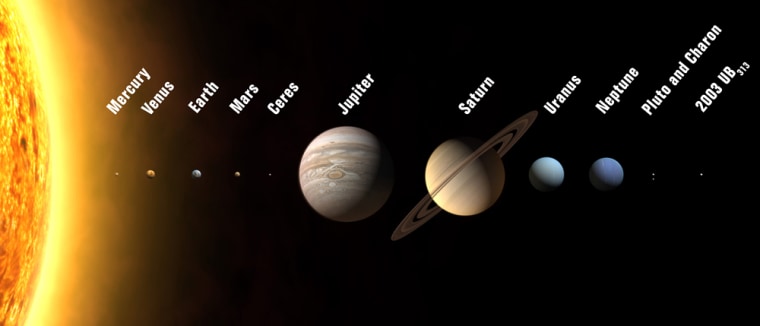Telescopes all over the southwestern United States will turn toward Pluto as it meanders Sunday across the face of a star in the constellation Sagittarius. The observations could help researchers better understand the dwarf planet's atmosphere.
Called an occultation, the phenomenon is akin to a solar eclipse. Just as our moon casts its shadow onto Earth when it passes directly in front of the sun, other planets also cast their shadows onto Earth when they pass in front of a star.
"Occultations are the only way we can monitor the atmosphere of Pluto from the Earth," said William Hubbard of the University of Arizona’s Lunar and Planetary Laboratory.
Occultations occur about once every five to 10 years for Pluto, but the phenomenon will become more frequent now that Pluto has moved between Earth and the central region of the Milky Way where most of our galaxy’s stars reside. With so many chance star encounters, Pluto is expected to experience one or two occultations each year.
"But even though there are now more than one of these events per year, we can't count on seeing them all because of cloudy weather or because Pluto's shadow falls on Earth where there are no observatories," said Bruno Sicardy of the Paris Observatory.
Pluto will pass in front of the star at 6 a.m. Eastern, and take about six minutes to complete its journey. This is about three times longer than typical Pluto occultations. In addition to the relatively long show, the shadow will be cast on the southwestern United States, a region heavily populated with giant telescopes.
The average skywatcher will miss out on a view of the event, unless they are equipped with a 20-inch or larger diameter telescope.
Astronomers glued to their high-powered scopes will observe the star’s light as it filters through Pluto’s atmosphere, just before the dwarf body blocks the starlight completely. Then, with further analyses they can glean information about the composition and pressure of Pluto’s frigid atmosphere. Depending on where along its orbit Pluto is in relation to the Sun, its atmosphere ranges from -391 to -274 degrees Fahrenheit (-235 to -170 degrees Celsius).
Astronomers also hope to determine the thickness of Pluto’s atmosphere, which is produced by vapor as it evaporates from the icy surface.
“What we get at the Earth is just a shadow of Pluto — a guest in the starlight,” Hubbard told SPACE.com. “The radius of the shadow is related to the radius of the atmosphere, how far the atmosphere goes above the surface.”
The observations could also inform future work done by NASA's New Horizons spacecraft, en route to Pluto now.
